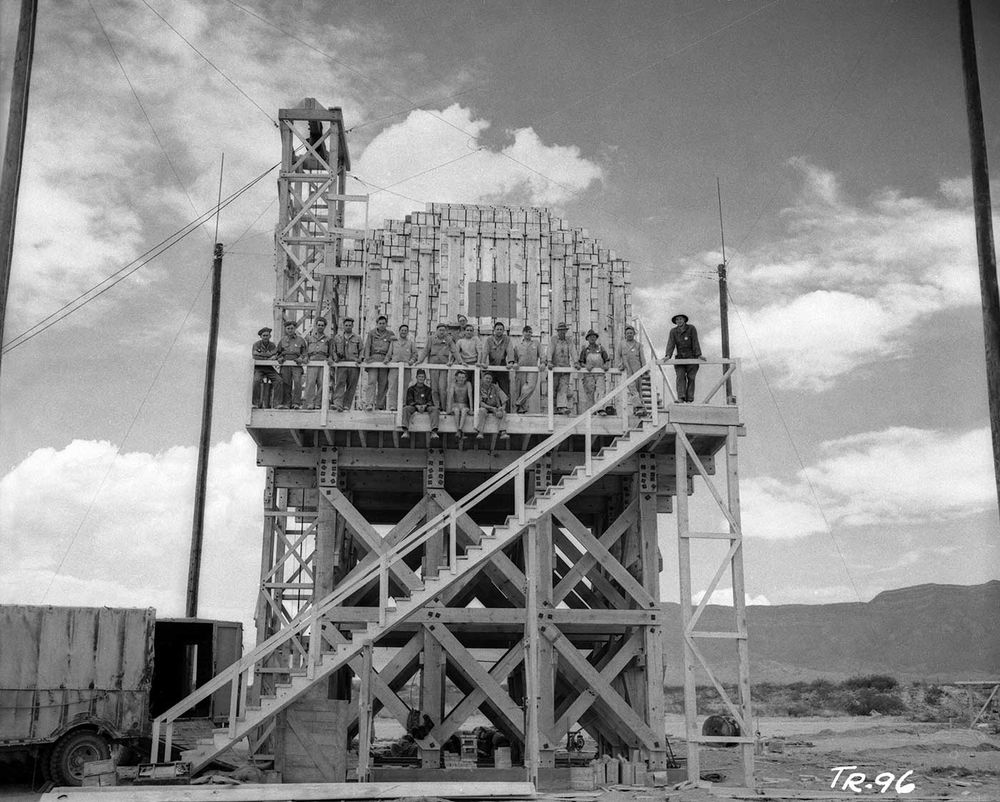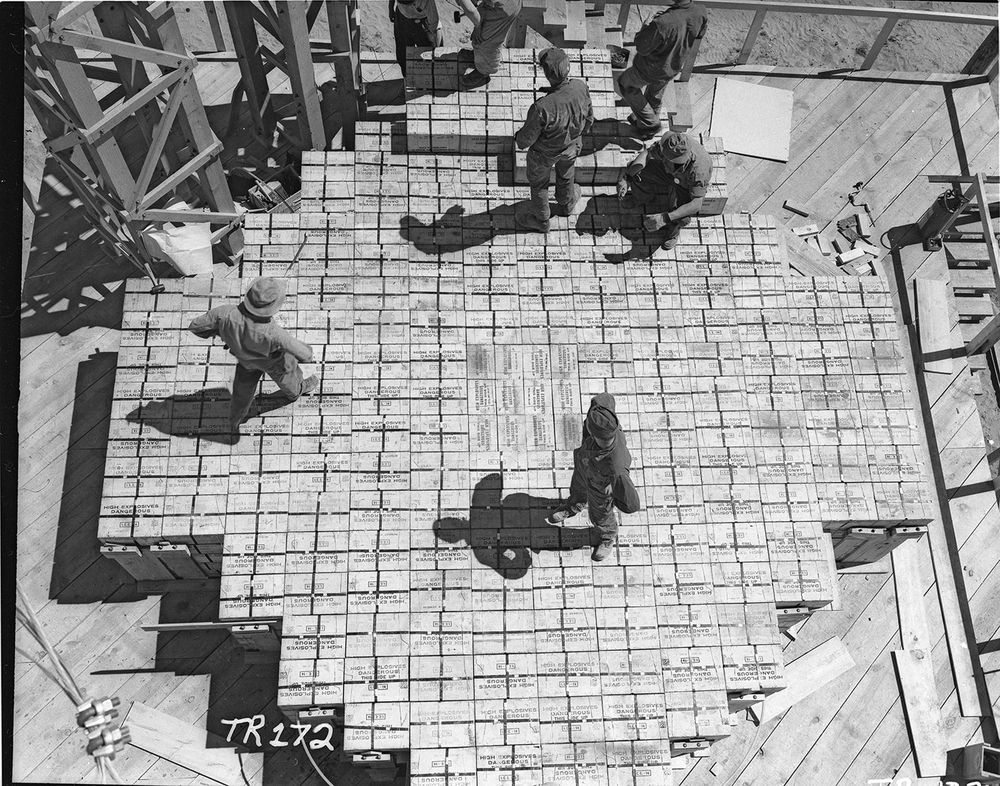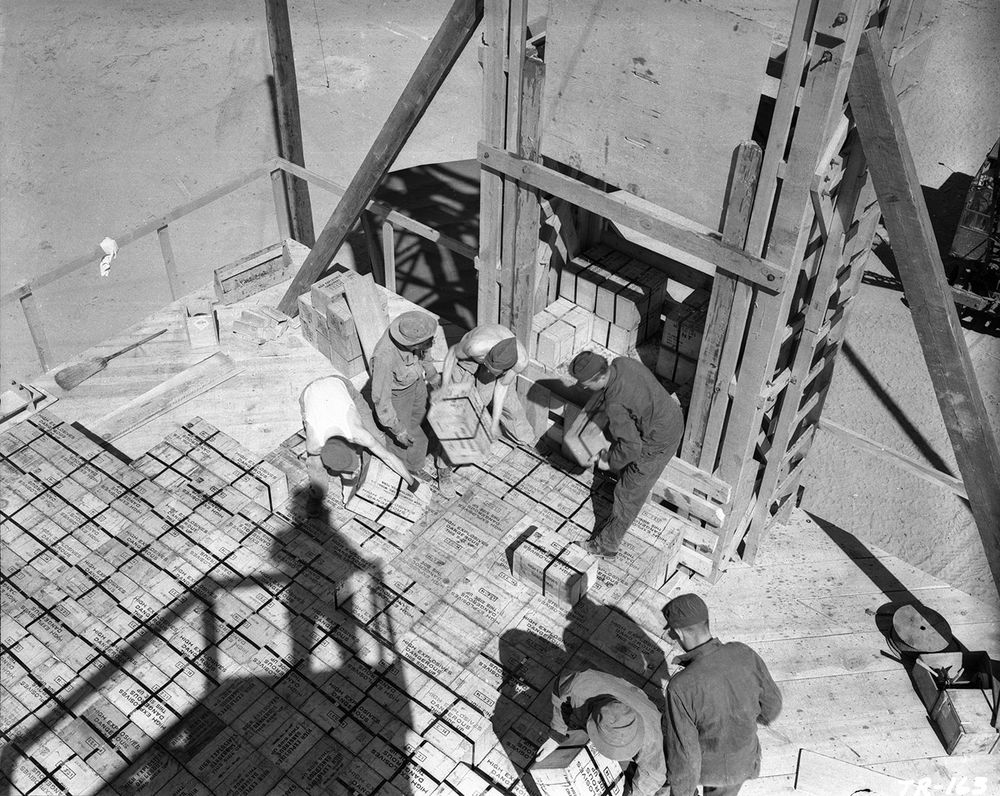By the spring of 1945, the United States had completed building the world’s first nuclear device, nicknamed The Gadget. It was an implosion-type plutonium device consisting of a near solid spherical core of plutonium, surrounded by a shell of conventional explosives. When the explosives were setoff, the implosion generated compressed the plutonium core to super criticality, triggering a runaway chain reaction, and the device exploded. The first nuclear test, codenamed Trinity, was scheduled for July 16, 1945.

The Trinity test of July 16, 1945.
In preparation for the upcoming test, engineers and scientists at Los Almos placed a host of instruments and detectors around the test site, in the desert in New Mexico, to measure the yield of the device, the shockwaves generated, and the radiation and fallout. Because there would be only one chance to carry out the test correctly, Kenneth Bainbridge, the Director of the Trinity nuclear test, decided that a full dress rehearsal should be carried out to allow the plans and procedures to be verified, and the instrumentation to be tested and calibrated.
For the simulation blast, a 20-foot tall wooden platform was constructed and loaded with 108 tons of high explosive TNT, stacked in the form of a cube. The center of gravity of the 100-ton stack was made 28 feet above the ground in scale with the 4-5 kilotons at 100-feet height expected in the final test. A flexible tubing carrying a slightly radioactive tracer was threaded through the pile of boxes of explosives so that the scientists might be able to study the behavior of the fallout plume anticipated from the Trinity test.

The 100-ton TNT test tower

Men stacking high explosives on the TNT test tower

Men stacking high explosives on the TNT test tower
The test was scheduled for May 5 but was postponed for two days to allow for more equipment to be installed. Requests for further postponements had to be refused because they would have affected the schedule for the main test.
The 100-ton test went off at 04:37 Mountain War Time (MWT), on May 7, 1945. It produced a large luminous fireball which then spread out into an oval form, followed by the ascent of the expected hot column which mushroomed out at a height of some 15000 feet. The fireball was visible from Alamogordo Army Air Field 60 miles away, but there was little shock at the base camp located 10 miles away. The B-29 assigned to measure shockwaves from the air hardly felt any shock when the blast wave reached it at a distance of about 4 miles. The explosion also seemed to arouse little comment in neighboring towns.
Ralph Nobles, a physicist who helped set up the 100-ton TNT test, shared an amusing anecdote about the test preparations.
They had a 'gear pump' set up on a table and were pumping the tracer solution into uniform grid of pipes which had been built in the TNT cube, through a plastic hose. For some reason the pressure built-up too high in the plastic hose attached to the pump, and the hose popped off the pump and started wildly flailing around and spraying radioactive tracer solution in all directions.
The radioactive tracer, though not highly dangerous, was not something in which one wanted to get soaked! So the nearby radio chemists started running away from the pump, to escape the radioactive liquid from the hose. The MP up here, on top of the TNT cube, saw the chemists running away, and must have assumed they were running because the TNT was about to explode! Whereupon, he dropped his rifle and started moving so that his helmet flew off. He literally ran 'out from under his helmet' and I have never seen 40 feet of stairs descended faster. He couldn't have reached the ground much faster by jumping.
However, he didn't stop at the ground and as he ran past my jeep, I wondered why he hadn't jumped in and yelled, 'that thing is about to blow, let's get the hell out of here,' but he didn't slow down or even seem to notice that we were there! When I last saw him, he appeared to be trying to set a running speed record!
The 100-ton test was an overall success as it helped uncover many scientific and technological issues, as well as reveal practical shortcomings. The team found that they needed decent roads as the increased traffic for two weeks before the rehearsal had turned the scraped adobe roads to dust which got into everything. As a result, about 20 miles of blacktop road were laid, and an area in the vicinity of the tower was also blacktopped. Wire communications had become overloaded during the test, so more telephone lines were laid and radios were procured. The rehearsal shot had gone off 1/4 second early due to electrical pick-up. This would have been costly in the final test where so many of the results depended on programmed timing down to the last millisecond. A town hall was built to allow for large conferences and briefings, and the mess hall had to be upgraded.
The 100-ton shakedown test gave the team confidence to go ahead with the first atomic bomb test. On July 16, 1945, the Trinity test took place. The device exploded with an energy equivalent to around 25 kilotons of TNT, around five times more powerful than expected. The resulting fireball was so hot, the desert sand, largely made of silica, melted and fused into a light green glass, which was named trinitite. At the time of detonation, the surrounding mountains were illuminated “brighter than daytime” and the heat was reported as “being as hot as an oven” at the base camp 10 miles away. The explosion was heard and the shockwaves felt over 100 miles away, and the mushroom cloud reached 7.5 miles in height.
After the blast waves had passed, Bainbridge turned to Oppenheimer and said, “Now we are all sons of bitches.”
References:
# 100-ton TNT Shot, Atomic Heritage Foundation
# Kenneth T Bainbridge, Trinity
# Kenneth T. Bainbridge, A foul and awesome display, Bulletin of the Atomic Scientists



Comments
Post a Comment